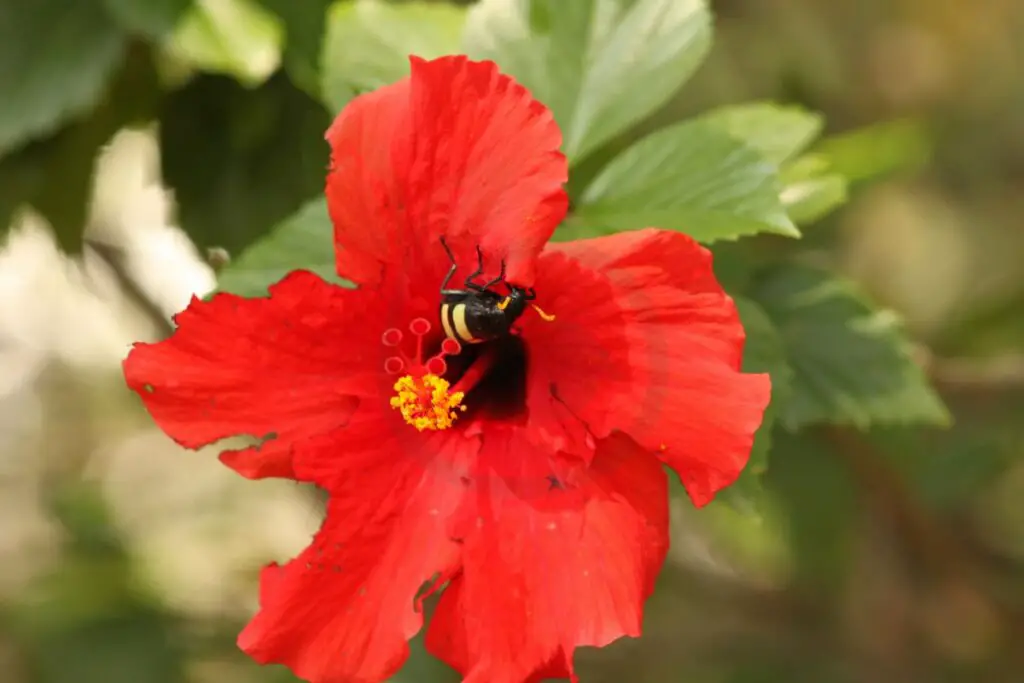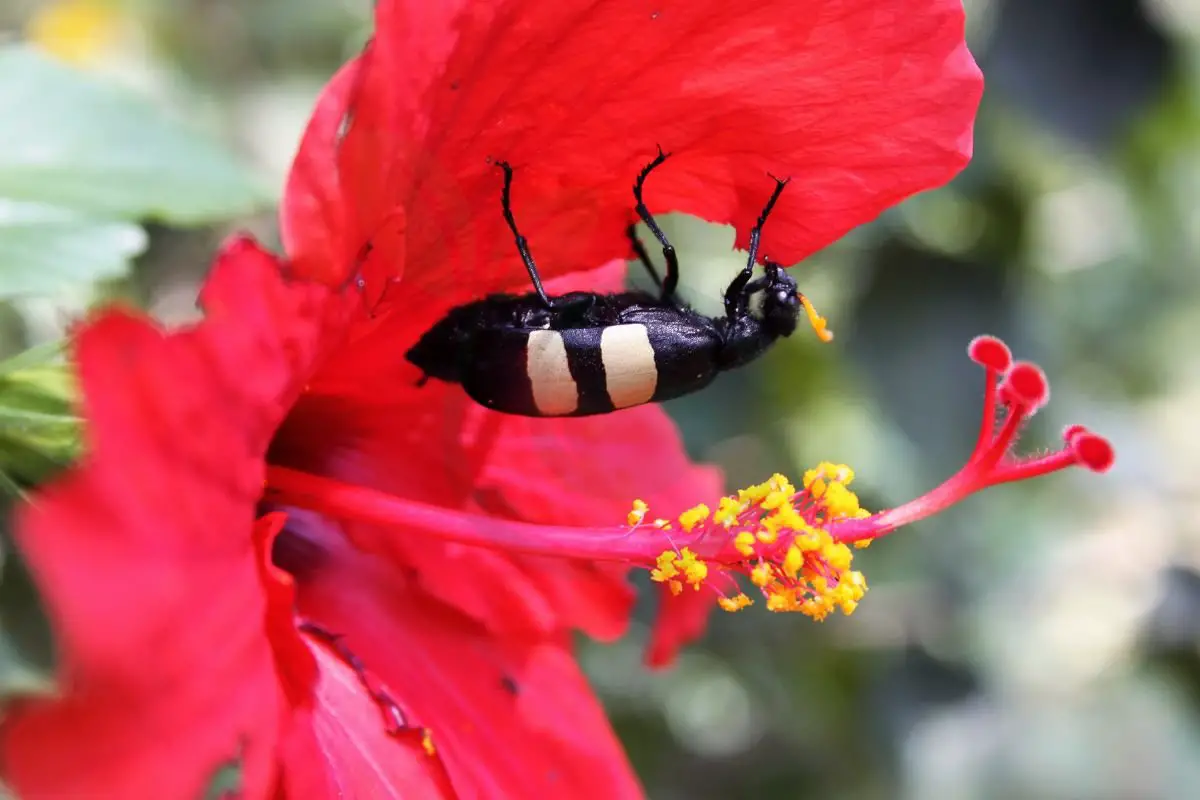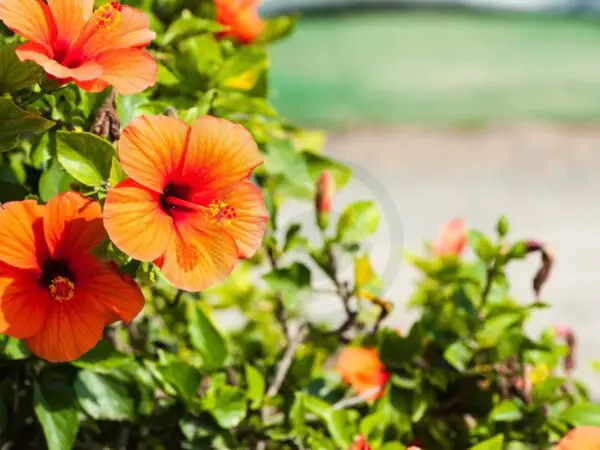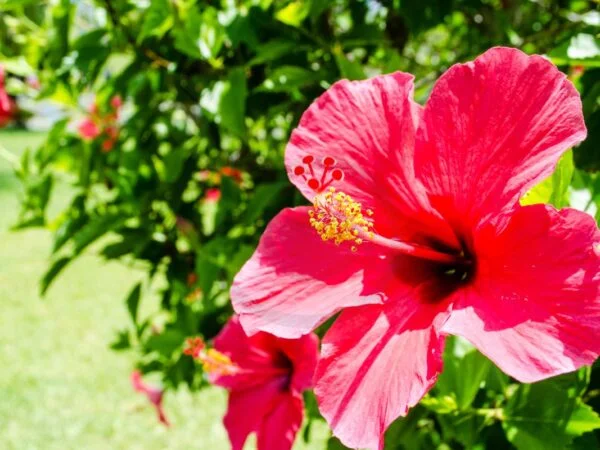Are mealy bugs, including new mealybugs, longtail mealybugs, and striped mealybug, wreaking havoc on your beautiful hibiscus plants? Learn how to get rid of mealybug infestations and infested plants with our expert tips, tricks, pesticides, and tools. Say goodbye to mealy bugs on hibiscus for good!
Key Takeaways
- Identify Mealy Bugs: Learn to recognize mealy bugs on hibiscus plants by their white, cottony appearance and their tendency to cluster in hidden areas.
- Embrace Natural Predators: Encourage beneficial insects like ladybugs and lacewings to control mealybug populations in a chemical-free way on infested plants.
- Utilize Physical Removal: Safely remove mealy bugs by wiping them off with a cloth or using a gentle stream of water to dislodge them.
- Opt for Organic Treatments: Consider using neem oil, insecticidal soap, or a mixture of water and alcohol to combat mealybugs without harsh chemicals.
- Implement Preventive Measures: Regularly inspect your hibiscus plants to prevent mealybug infestations, avoid over-fertilizing, and maintain proper air circulation to prevent growth.
- Seek Expert Advice: Consult with gardening experts or professionals if mealybug infestations persist despite your efforts.
Identifying Mealy Bugs
Signs of Infestation
Mealybugs on hibiscus can be identified by white cottony clusters on stems and leaves. These mealybugs pests also leave behind a sticky substance called honeydew, attracting ants.
Mealy Bug Life Cycle
Mealy bugs go through several stages: egg, nymph, and adult. Eggs hatch into crawlers that spread across the plant, feeding on sap and mealybugs.
Damage to Hibiscus
Mealybugs damage hibiscus by sucking sap, causing yellowing and wilting of leaves. Severe infestations can lead to stunted growth and even death of the plant.
Natural Predators
Introduce Beneficial Insects
Beneficial insects play a crucial role in controlling mealybug populations on hibiscus plants. Ladybugs, lacewings, and parasitic wasps are effective natural predators.
These insects feed on mealybugs, helping to keep their numbers in check without the need for harmful chemicals. Ladybugs, in particular, are voracious eaters of mealy bugs.
Encouraging Garden Allies
To attract these beneficial insects to your garden, consider planting nectar-rich flowers such as dill, fennel, and marigolds. These flowers provide food sources for the predatory insects.
Creating a diverse and healthy garden ecosystem with a variety of plants also encourages beneficial insect populations to thrive. Avoid using pesticides that can harm these helpful allies.
Physical Removal Techniques

Water Spray Method
To eliminate mealybugs on hibiscus using the water spray method, firstly, fill a spray bottle with water and add a few drops of dish soap. Next, thoroughly spray the affected hibiscus plant, ensuring to target both the upper and lower surfaces of the leaves. This technique helps dislodge and wash away the mealybugs from the plant. Remember to repeat this process every few days until the infestation is under control.
Manual Removal
Manual removal is another effective way to get rid of mealy bugs on hibiscus plants. Begin by inspecting your plant carefully and identifying any visible mealybugs. Then, using a cotton swab dipped in rubbing alcohol, gently dab each mealybug to remove them from the plant. This method allows for targeted removal of individual mealybugs without harming the overall health of the hibiscus. Be sure to dispose of the removed mealybugs properly to prevent reinfestation.
Organic Treatment Options
Neem Oil Application
Neem oil, derived from the neem tree, is an effective natural remedy for mealy bugs on hibiscus. Apply a diluted solution of neem oil on the affected parts of the plant. This suffocates the pests and disrupts their growth cycle, reducing their population.
To make a neem oil spray, mix 1-2 teaspoons of neem oil with a few drops of dish soap and water in a spray bottle. Shake well before use. Spray this solution on the hibiscus leaves, focusing on areas with mealybugs infestations. Repeat every 7-14 days until the pests are eradicated.
Insecticidal Soap Spray
Insecticidal soap is another environmentally friendly option to combat mealybugs on hibiscus plants. The soap works by breaking down the protective outer layer of the mealybugs, causing them to dehydrate and die. It is safe to use and does not harm beneficial insects in the garden.
To create an insecticidal soap spray, mix a solution of mild liquid soap (such as Castile soap) with water in a spray bottle. Ensure it is free from additives like fragrances or moisturizers that could harm plants. Spray this solution directly on the mealybugs, covering both sides of the leaves thoroughly. Reapply every 4-7 days until the infestation clears up.
Chemical Control Methods
Systemic Insecticides
Systemic insecticides are absorbed by the hibiscus plant, making them effective against hidden mealy bugs. These insecticides circulate within the plant's system, targeting mealybugs feeding on sap. Examples of systemic insecticides include imidacloprid and acetamiprid.
When using systemic insecticides, it is crucial to follow manufacturer instructions for application and dosage. Apply the insecticide to the soil around the hibiscus plant, allowing it to be taken up by the roots and distributed throughout the plant. This method ensures long-lasting protection against mealy bugs.
Contact Insecticides
Contact insecticides act upon direct contact with mealybugs on hibiscus leaves or stems. These products kill mealybugs and pests on contact but may not eliminate hidden or future infestations. Common contact insecticides include pyrethroids and neem oil, which are readily available in garden centers.
One advantage of contact insecticides is their immediate impact on visible mealy bugs, providing quick relief to the hibiscus plant. However, frequent applications may be necessary to control ongoing infestations effectively. It is essential to cover all affected areas thoroughly when applying contact insecticides.
Preventive Measures
Regular Monitoring
Regularly inspect your hibiscus plants for any signs of mealybugs. Check the undersides of leaves and along the stems.
Keep an eye out for white, cottony clusters, which indicate the presence of mealybugs. Act promptly upon detection.
Proper Plant Care
Maintaining optimal growing conditions for hibiscus can help prevent mealy bug infestations. Ensure proper watering and adequate sunlight.
Prune regularly to remove any affected parts and promote airflow around the plant, reducing favorable conditions for mealy bugs.
Quarantine New Plants
Before introducing new hibiscus plants to your garden, isolate them in a separate area for a few weeks. This helps prevent potential mealy bug spread.
Inspect the new plants thoroughly during this quarantine period to ensure they are free from any pests, including mealybugs.
Cultural Practices
Pruning Infected Parts
Prune the infected parts of your hibiscus plant using sharp, sterilized pruning shears to prevent spreading. Remove affected leaves and stems, disposing of them far from other plants.
To prevent the mealybugs from returning, monitor the plant regularly for any signs of reinfestation. Inspect both sides of the leaves and stems carefully.
Soil Health Improvement
Maintain well-draining soil for your hibiscus to discourage mealybugs infestations. Ensure the soil is not waterlogged, as mealybugs thrive in damp conditions.
Consider applying a layer of mulch around the base of the plant to regulate soil moisture levels and promote overall soil health. This can help deter mealy bugs from establishing themselves.
Environmental Control
Humidity and Moisture Management
Maintaining optimal humidity levels is crucial in controlling mealybugs on hibiscus plants. Excessive moisture creates a favorable environment for mealybugs to thrive, so ensure proper ventilation around the plant.
To reduce humidity, avoid overwatering the hibiscus and allow the soil to dry out between watering sessions. Consider using a well-draining potting mix to prevent waterlogging.
Sunlight Exposure Adjustment
Direct sunlight exposure can help in naturally controlling mealy bugs as they prefer shaded areas. Ensure your hibiscus receives adequate sunlight to deter these mealybugs from infesting the plant.
Consider moving your hibiscus to a brighter location with more sunlight exposure. However, be cautious not to expose the plant to intense sunlight for extended periods, as it may lead to sunburn on the leaves.
Expert Consultation
When to Seek Help
If home remedies, environmental controls, and professional assistance fail to eliminate mealybugs, seek professional assistance. Persistent mealybugs infestations may indicate a more severe problem requiring expert intervention.
Consult experts if mealy bug damage significantly affects your hibiscus plant's health. Professionals can provide tailored solutions based on the extent of infestation and plant condition.
Professional Pest Control Services
Consider hiring reputable pest control services for severe mealy bug invasions. Experts can conduct thorough inspections and apply specialized treatments effectively targeting mealy bugs.
Professional services offer long-term solutions, ensuring mealy bugs are eradicated without harming your hibiscus plant. They possess the knowledge and resources to tackle challenging infestations efficiently.
Closing Thoughts
In your battle against mealy bugs on hibiscus plants, you've learned to identify these pests, employ natural predators, and utilize various removal techniques. From organic treatments to chemical controls, you now have a range of options at your disposal. Implementing preventive measures and adopting cultural practices can help maintain a bug-free environment for your beloved hibiscus plants. Environmental control and seeking expert consultation when needed are crucial steps in ensuring the health of your garden.
As you continue caring for your hibiscus plants, remember that vigilance is key. Regular inspections and prompt action can prevent infestations and keep your plants thriving. Share your newfound knowledge with fellow gardeners to create bug-resistant gardens together.
Frequently Asked Questions
How can I identify mealy bugs on my hibiscus plant?
Mealy bugs appear as small, white, cottony masses on the leaves and stems of hibiscus plants. They may also leave a sticky residue on the plant. Regularly inspect your hibiscus for these signs to identify a mealy bug infestation early.
What are some natural predators of mealy bugs that can help control their population?
Ladybugs, lacewings, parasitic wasps, and predatory beetles are natural enemies of mealy bugs. Introducing these beneficial insects to your garden can help keep mealy bug populations in check without using harmful chemicals.
What physical removal techniques can I use to get rid of mealy bugs from my hibiscus?
You can physically remove mealy bugs by gently wiping them off with a cotton swab dipped in rubbing alcohol or soapy water. Pruning heavily infested areas and disposing of the affected plant parts can also help control the infestation.
Are there organic treatment options available to combat mealy bugs on hibiscus plants?
Yes, neem oil, insecticidal soap, horticultural oil, and diatomaceous earth are effective organic treatments for mealy bugs. These products smother or dehydrate the pests without harming beneficial insects or the environment.
What are some preventive measures I can take to avoid future mealy bug infestations on my hibiscus?
To prevent mealy bug problems, maintain good plant hygiene by regularly pruning dead or infected plant parts. Avoid over-fertilizing as it can attract pests. Inspect new plants before introducing them to your garden to prevent introducing pests inadvertently.
Image Source: Paid image from CANVA




